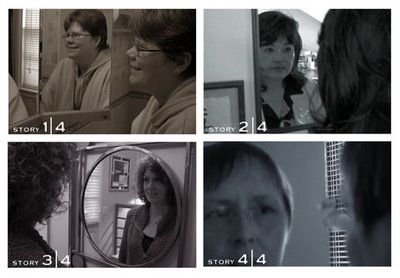Readings for Spring 2008
TH 1/17 Intro
T 1/22
TH 1/24
T 1/29 Strong Words
TH 1/31 Encyclopedia Erratica
T 2/5 Women and Design by Michael Bierut
http://www.designobserver.com/archives/020303.html
TH 2/7 No Class – MK 12 VISITING
T 2/12 How High Do We Set the Bar for Education? - Meredith Cullen
TH 2/14 Remaking Theory, Rethinking Practice - Andrew Blauvelt
T 2/19 Designer as Author Series SVA: Ellen Lupton
to access:
-enter itunes store and click "podcasts"
-search for SVA MFA Designer as Author: Guest Lectures
The Producers by Ellen Lupton
http://www.elupton.com/index.php?id=48
TH 2/21 CAA - Dallas
T 2/26 Is Apple Soft on Crime?
http://www.designobserver.com/archives/031308.html
Under Consideration/Speak up Response:
http://www.underconsideration.com/speakup/archives/004308.html
TH 2/28 Designers don't read...enough by Armin Vit
http://www.aiga.org/content.cfm/designers-dont-read-enough
T 3/4 Sustainable Consumerism
By Chris Riley (Émigré)
TH 3/6 Alice Twemlow
When Did Posters Become Such Wallflowers? (Design Observer)
T 3/11 Digital Humanism - Charles H. Traub and Jonathan Lipkin
TH 3/13 Of Bonding and Bondage: Cult, Culture, and the Internet - Denise Caruso
T 3/18 Spring Break
TH 3/20 Spring Break
T 3/25 In and Around: Cultures of Design and the Design of Cultures
Part I , By Andrew Blauvelt (Émigré)
TH 3/27 In and Around: Cultures of Design and the Design of Cultures
Part II, By Andrew Blauvelt (Emigré)
T 4/1 Design as Slow Motion Train Wreck
http://www.aiga.org/content.cfm/design-as-slow-motion-train-wreck
TH 4/3 DSVA - Dallas
T 4/8 Why is This Font Different Form All Other Fonts?
http://www.designobserver.com/archives/025809.html
TH 4/10 Graphic Authorship - Michael Rock
T 4/15 The Designer as Producer - Ellen Lupton
TH 4/17 Reed Fahnestock's MFA Thesis Paper
T 4/22 Back to School
http://www.designobserver.com/archives/027923.html
TH 4/24
T 4/29
TH 5/1
T 5/6
TH 5/8 –Last day of class

